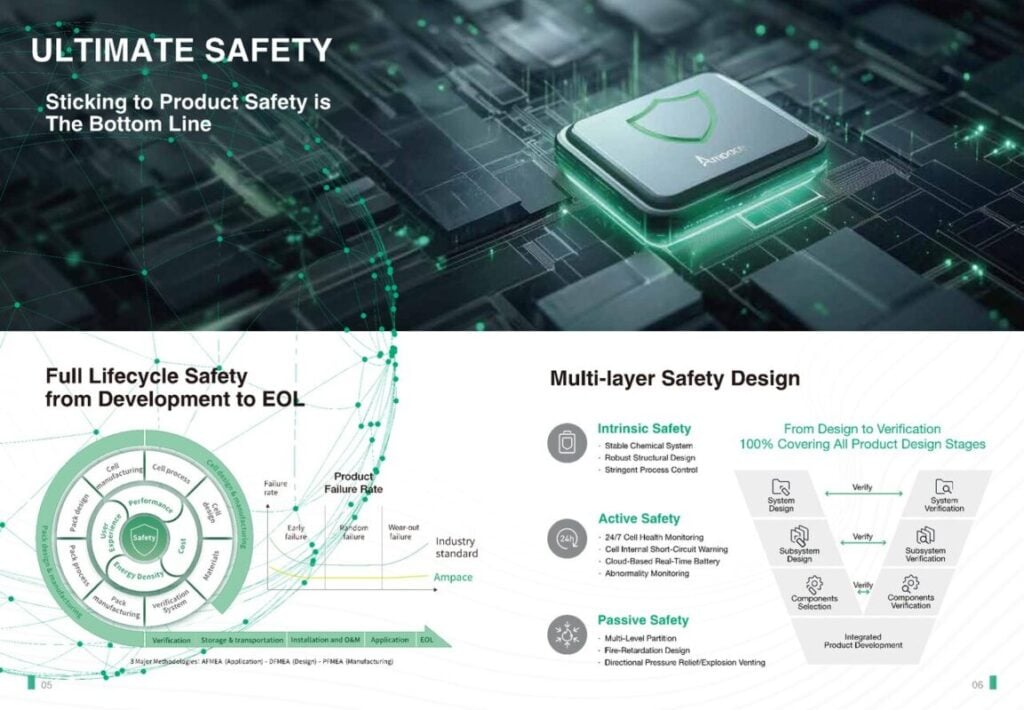
As Australia accelerates its transition toward renewable energy, the demand for reliable and sustainable energy storage solutions has never been higher.
The rapid expansion of distributed solar systems, growing grid complexity, and evolving regulatory requirements have made stability and safety essential for both energy users and providers.
While many industry players focus primarily on cost, Ampace stands out by placing absolute safety and sustainable development at the core of its innovation strategy.
As a global leader in battery and energy storage technology, Ampace integrates these two pillars into every stage of the product lifecycle — from intelligent system architecture to long-term operation — ensuring solutions that deliver not only high performance but also enduring reliability and environmental responsibility.
Try Premium for just $1
- Full premium access for the first month at only $1
- Converts to an annual rate after 30 days unless cancelled
- Cancel anytime during the trial period
Premium Benefits
- Expert industry analysis and interviews
- Digital access to PV Tech Power journal
- Exclusive event discounts
Or get the full Premium subscription right away
Or continue reading this article for free
Safety first — designing for reliability and resilience
Australia’s frequent bushfires, floods, and extreme temperatures — often exceeding 45°C — make energy safety and reliability not just technical requirements, but public priorities.
Ampace’s safety philosophy is built on a system-level approach that integrates material science, thermal management, and intelligent protection mechanisms to ensure stability across diverse environments. This holistic design logic underpins the company’s pursuit of reliable performance amid Australia’s increasingly unpredictable climate.
In Australia, heatwaves and bushfires frequently threaten the national grid. Ampace’s energy storage systems are designed to operate safely and efficiently even under extreme conditions. Its Kunlun cells enhance thermal stability to eliminate risks of leakage or thermal runaway and enable energy systems to maintain performance between –20°C and 55°C.
During extended hot spells, when demand peaks and transmission lines face overheating risks, Ampace’s systems help stabilise energy supply and prevent load shedding.
Beyond extreme weather resilience, Ampace’s engineering is also tested for seismic and structural reliability. In Chile, where frequent earthquakes disrupt grid stability, Ampace deployed an energy storage project integrated with a high-voltage transformer station and powered by local renewable energy. During a simulated 9.0-magnitude earthquake scenario, the system maintained continuous operation, securing stable electricity for over 200,000 residents in the Andes region.
The installation has since reduced grid fluctuation–related outages by nearly 80% and lowered annual demand for coal-fired generation by around 12GW. Backed by real-time leakage monitoring and module-level fire safety certification, the project exemplifies how Ampace delivers both resilience and sustainability — experience that now informs its solutions for Australia’s renewable landscape.
Sustainability as a long-term commitment
Battery storage has become increasingly central for Australia’s pursuit of a sustainable energy future. By 2030, the country is expected to generate over 180,000 tonnes of lithium-ion battery waste annually. Managing lifecycle emissions, improving material recycling, and reducing the carbon footprint of production have become critical steps toward building a circular energy economy.
A flagship example of Ampace’s sustainability commitment is the Andes1500 energy storage battery — the company’s first product certified as carbon-neutral by Climate Partner and recognised under Amazon’s Climate Pledge Friendly program.

The Andes1500 adopts LFP chemistry for extended lifecycle performance and incorporates SiC-based power electronics to achieve over 95% energy conversion efficiency, significantly reducing operational energy loss. Manufactured using renewable electricity and recyclable packaging, it minimises resource consumption while extending usable life.
By integrating durable materials, high-efficiency systems, and transparent carbon tracking, Ampace turns sustainable design into tangible outcomes — longer product lifespan, lower emissions, and measurable contributions to Australia’s clean energy transition.
Ampace’s low-carbon manufacturing practices and long-life product design further minimise environmental impact across the entire lifecycle. In recognition of these achievements, the company earned the EcoVadis Silver Medal in August 2025, placing it among the top 10% of global enterprises for sustainability performance. This distinction underscores Ampace’s capacity to deliver safe, reliable, and sustainable solutions tailored for the Australian market.
Integrating safety and sustainability for the next generation of storage
Over the next three to five years, Ampace plans to invest more than 10% of its annual revenue into R&D, expanding its portfolio of over 1,000 patents and deepening its participation in international standards bodies such as UL and IEC.
With CNAS/ISO 17025 and IATF 16949-certified facilities, the company continues to strengthen every link of the lithium-ion value chain—from cell chemistry and system architecture to large-scale integration—enhancing safety, energy density, and production efficiency for next-generation storage systems.
Ampace’s alignment with globally recognised standards ensures that its technologies not only meet but exceed Australia’s rigorous safety and quality requirements. This compliance foundation, combined with continuous innovation and lifecycle carbon management, positions Ampace as a trusted partner in the nation’s renewable transition.
As battery adoption expands across the grid and households, Ampace’s integrated approach—from eco-design to end-of-life recovery—provides a scalable blueprint for the circular energy economy that Australia aims to build.
About the Author
Raymond Ye is vice president of the energy storage business unit at Xiamen Ampace Technology Limited. With a distinguished career spanning over two decades, he has held key leadership roles in renowned multinational corporations including ATL, Bosch, Carl Zeiss and Sony.
Raymond is a seasoned professional in the lithium-ion battery and energy storage space, where he leverages his deep industry expertise to drive strategic vision, foster innovation, and shape the future of sustainable energy. He is recognised for his exceptional ability to build and lead high-performing teams, navigate complex market dynamics, and deliver transformative business outcomes on a global scale.
